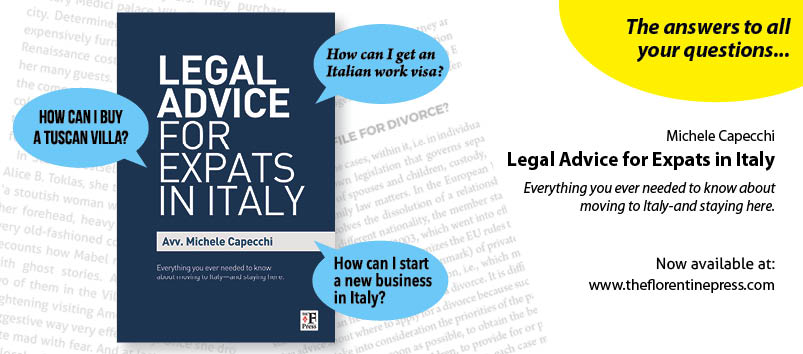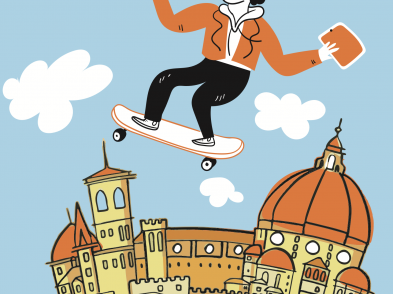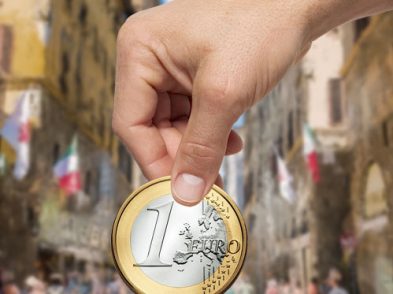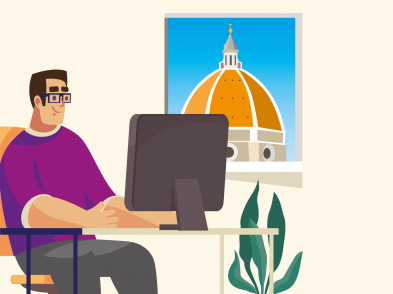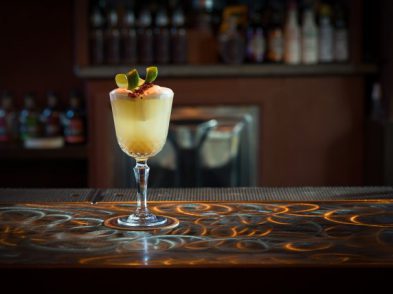Disclaimer: The information provided in this article does not constitute legal advice and should not substitute for counsel. The information is based on the opinion of an independent expert and does not claim to be complete or definitive.
A remarkable number of promising students attend Florence’s fashion and design schools, and many of them decide to launch their business ideas in Tuscany after graduation. Whether your field is fashion, design or something else altogether, if you are about to start a business, there are some important things you need to know and do in order to protect your ideas and safeguard your creations. It is important to understand which aspects of your creative efforts—your intellectual property—can and should be protected and how, where and when.What intellectual property can be protected and how? Your ideas, image and product can be protected with intellectual property rights (often referred to as IPRs). While patents, copyrights and trademarks are the most common forms of protection for intellectual property, they are not the only ones.
Common forms of protection for intellectual property1. Your ideas and inventions.Generally speaking, an idea that offers an innovative solution to an existing technical problem and that is capable of some kind of industrial application can be protected with a patent.
2. Your material product.If your innovative work is created or expressed in a tangible or material way, then it is appropriate to obtain copyright protection.3. Your image.In today’s globalized economy, every company that wants to be competitive invests in its image by creating its name, logo, design, slogan, music and even packaging colors. These graphic elements are combined to make a company unique and distinctive. Trademark protects the signs (which can include sounds, colours and shapes) that are used to distinguish the goods or services of one enterprise from those of another.4. Your experience.What you know and can do (or your know-how) has been developed over the years. Your secret and more effective methods to resolve complex problems; your formula or ingredient that makes your recipes unique—these are valuable immaterial assets of your business because this knowledge gives you an advantage over competitors who do not have the same information. In some countries, these intangible assets are known as ‘trade secrets’ (or, depending on the jurisdiction, ‘know-how’) and are regulated by specific national laws (see U.S. Restatement of the Law of Torts, and the Uniform Trade Secrets Act, adopted by most American states). Other times, they are more properly protected by specific and binding agreements signed by the parties who will share those secrets.
Where is my intellectual property protected?These means of protection have national borders. Most are valid only in the territory where registration for them has been filed. In order to enforce your trademark or patent in other countries, you need to secure protection in those countries, often through a new registration.
When should I start protecting my intellectual property?As one of my intellectual property law professors would advise, the time to do it was yesterday. If, for example, you don’t register your trademark at the outset because you have limited resources and then put your creation online without proper trademark protection, you risk incurring greater costs down the road. Because trademarks have territorial limits, your unique signs, marks and slogans, if not promptly registered, are available to be copied, cloned and registered by some foreign competitor on the opposite side of the world, making you unable to register your idea or trademark in that country (this is called trademark squatting). Your initial investment in trademark registration is much less than the great cost of missed opportunities, time invested in research and development and legal battles to regain your intellectual property.
Even though you are just starting up, do not underestimate any future costs that you might have to face in order to protect what originally belonged to you and to get it back from someone who was faster—and less scrupulous—than you. If your idea is truly original, and if you believe that sooner or later it will end up for all the world to see on the Internet, protect it now. It’s never too early to protect what makes you unique and original.Intellectual property quiz1. True or false? What I find on the Internet belongs to its creator and, unless stated otherwise, cannot be ‘copied and pasted’ without the permission of the author or creator.True. This is the golden rule that every blogger, WordPress user or entrepreneur using the Internet to promote goods or services must follow. If you are using social media (Facebook, WordPress, Google+ or a blog) for work purposes, if you love to share your thoughts and pictures on Instagram, double check on that Internet site whether you are supposed to comply with specific copyright policies (as in the case of Creative Commons license rules).2. Yes or no? I love this artwork and the artist has been dead for 70 years; I can use this image in any way I want.Probably not. If the work is in a private collection or museum, you will need to ask permission (which may involve a fee) to use the image for your business—or even private use.
3. Risky or not risky? I am not copying, I am just ‘taking inspiration.’ Risky. If your sign, design, symbol or product name is too similar to the original, the two could be confused and mistakenly associated with you, the final user; or if the distinctive elements of the two creations are too alike, your product is violating the intellectual property rights of the first creator, which has legal consequences.

